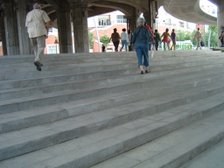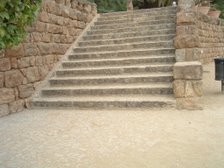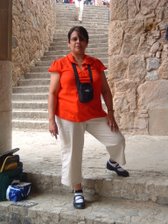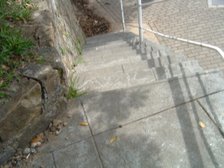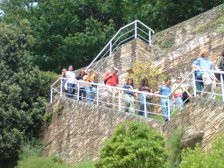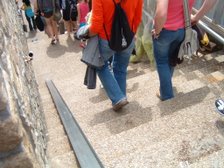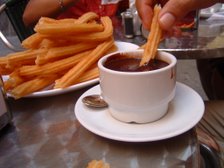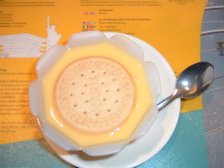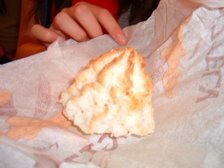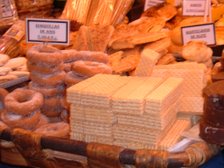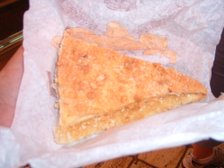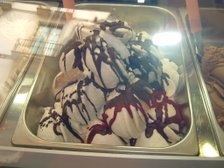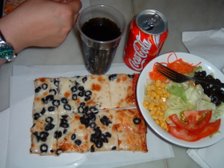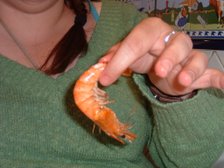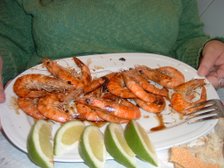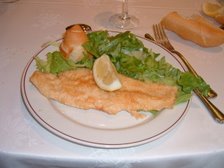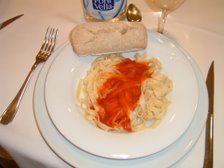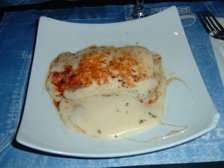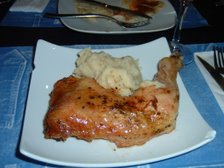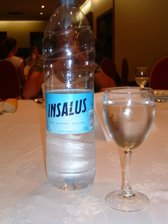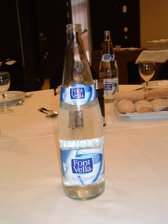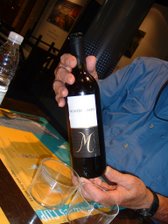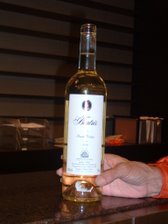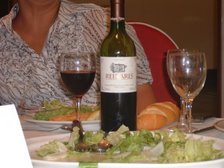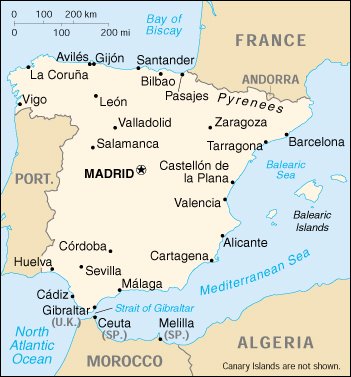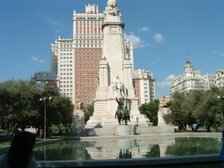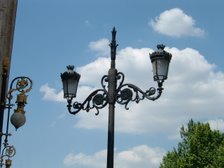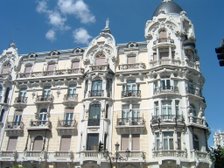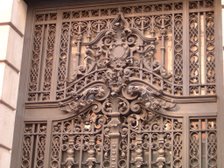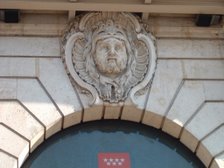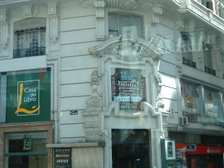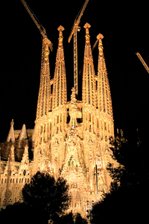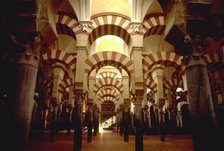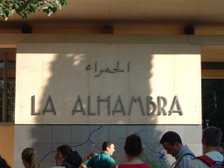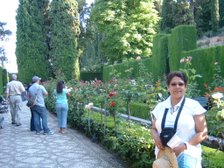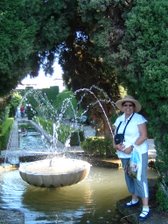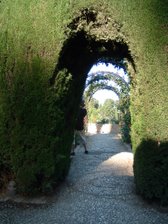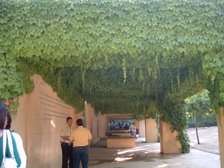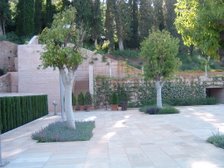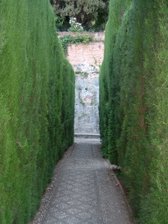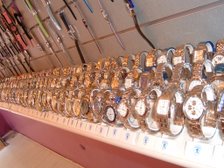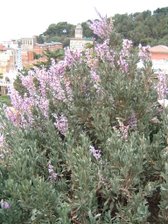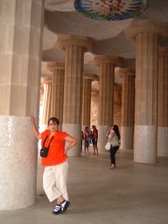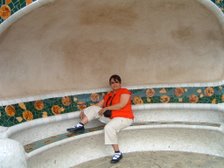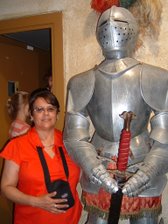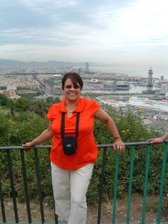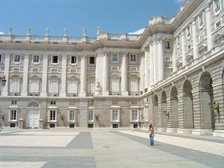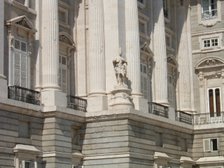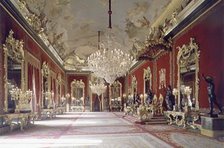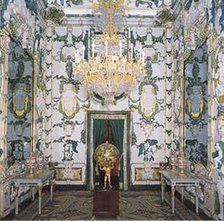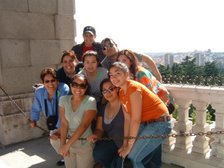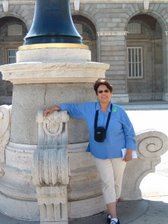
Everywhere you go in Spain, you are sure to come across stairs! Stairs are a big part of Spain’s society.
Photographer Marsha J. P. Gonzales
Walking the streets of Spain, whether you’re in the beautiful city of Sevilla or walking the Mediterranean city of Valencia, you cannot get away from walking the stairs. Stairs are in Spain’s metro (subway), shopping malls, and restaurants. Even if you are just looking for a bathroom, there are stairs.
The metro in Madrid is said to be one of the most extensive systems anywhere in the world. What I experienced at most metro stops was three major staircases along with three major escalators. You could even walk the escalators. Most Spaniards do not ride the escalator; they walk it.
To enter a shopping mall in Madrid, you have to descend some major stairs. If you wish to use the bathroom in most restaurants, you have to descend two narrow, steep staircases. All the while you are working your gluteus maximus (tush) and leg muscles. Walking, along with stair climbing, increases your energy. It is also healthy for your brain, muscles, and self-esteem, which increases your energy level.
At one restroom on the run in Spain, stairs led to the restroom I counted them: 14 up followed by 60-step walk across the state highway and 15-steps down. If you are out at the mall and have to use the restroom in my hometown of San Antonio, most restrooms can be found on the first level. There are escalators or elevators you can ride up to the restroom. One example is shopping at J C Penney’s in South Park Mall. If you need to go to the restroom, you can ride the escalator or take the elevator up to the second floor. There are no stairs in J C Penney’s. Americans have become a society of lethargic people.
The U.S. does have some subway stairs in
 some of our chief cities, such as New York. There is a great amount of descending and ascending involved in the climbing the staircases, but I live in San Antonio, Texas. We do not have a subway or major stair climbing. Sure you can pay a fee to climb the stairs of the Hemisphere Tower, but who can afford to pay on a daily basis? Maybe I could get a job there, just so I could climb the stairs everyday. Not!
some of our chief cities, such as New York. There is a great amount of descending and ascending involved in the climbing the staircases, but I live in San Antonio, Texas. We do not have a subway or major stair climbing. Sure you can pay a fee to climb the stairs of the Hemisphere Tower, but who can afford to pay on a daily basis? Maybe I could get a job there, just so I could climb the stairs everyday. Not! Photographer Serdar Sunny Unal
Stairs in NYC, New York, USA
While in Spain, I did not see one heavy Spaniard. It is because they walk everywhere and climb so many stairs. An average Spaniard male, is slim with medium muscle mass. The average female is slim and well toned.
America is one of the fattest nations in the world. San Antonio ranks as the fourth fattest cit, in Texas. According to the U.S. Magazine posting March 31, 2005 the fattest Americans live in Texas. Among the eight U.S. cities with the most overweight inhabitants, Texas has five. While San Antonio tips the scales in the top ten. San Antonio went from number 13 to number 4.
In this student’s opinion, Americans need to follow the Spaniard's way of life when it concerns their health.
While in Spain, I did not see one heavy Spaniard. It is because they walk everywhere and climb so many stairs. An average Spaniard male, is slim with medium muscle mass. The average female is slim and well toned.
America is one of the fattest nations in the world. San Antonio ranks as the fourth fattest cit, in Texas. According to the U.S. Magazine posting March 31, 2005 the fattest Americans live in Texas. Among the eight U.S. cities with the most overweight inhabitants, Texas has five. While San Antonio tips the scales in the top ten. San Antonio went from number 13 to number 4.
In this student’s opinion, Americans need to follow the Spaniard's way of life when it concerns their health.
The parks in Madrid have an abundance of shade, walkways and stairs. San Antonio's leaders should invest in parks with shaded walkways, stairs, ramps and bike paths. If San Antonio had parks with shaded walkways, more citizens would be out walking their dogs, strolling their babies, riding bikes, jogging and running up and down stairs.
I believe that if we had more shade and stairs, more people would spend time outside, after work. They would be more willing to take a stroll after their meal time. We do have citizens who get up early or go out late at night to just avoid the heat. But where are the stairs?
Americans have a variety of meal plans and plenty of choices, including hamburgers, fries, tacos, fried chicken, pizza, pretzels, Mexican sweetbreads, cookies, brownies, candy, smoothies and milkshakes. We could continue to eat these fattening foods without risking early death or diabetes, if we would only climb and walk the meals and snacks off.
Spaniards walk off their meals. While in Spain, I ate like there was no tomorrow. I could never do that back home. This is one American who has learned the value of walking and most important the value of stair climbing.
I have learned that, yes, you can walk with bunions or swollen feet or even both. Walking and climbing stairs can be a stress reliever. It can help you clear your mind or enable you to put your thoughts to work creating that great idea for a story or whatever creative attribute you may have. It enables you to have a more peaceful sleep.
I have learned that you can endure the torture of walking and climbing the metro stairs in Madrid, even when you are under the influence of jetlag.
On our return trip to Madrid, we once again ventured into the metro. This time we were laughing and a lot of us were running up the steep metro stairs. Yes, three flights of steep stairs. Unfortunately, I did not count the stairs, but my educated guest would be at least 30 steps per stair case. I was to busy huffing and puffing all the way up the first two times. Then on the return visit, 13 days later, I was busy having too much fun running the stairs.
Dr. Denise Barkis Richter, who was traveling on the metro, mistakenly took the wrong metro stop and got off at Cuatro Caminos.
"After I walked up the 233 steps, a new record, I decided to walk the rest of the way to the museum. I did not want to walk the 233 steps back down. My chest was still heaving. My thighs were burning, and my heartbeat was racing," wrote Richter.
While interviewing Palo Alto’s study abroad students, I learned that all of them lost weight. I truly believe this is due to all the stair claiming we endured.
Nineteen-year old Krystal Marquez said “she lost ten pounds and toned up.”
Alma had foot problems. She walked with a cane. By the time she arrived home, her foot was healed and she could walk without the use of her cane.
Nineteen-year-old Sarah Apolinar said "she lost five pounds." Sonia Gonzales lost 10 pounds.
I myself lost three inches on my waist, toned up my leg and arm muscles, slimmed my inner and outer thighs, and firmed my gluteus maximus in just 17 day of walking and stair climbing in Spain.
I have lost two more pounds these eight days that I have been back. I was out walking my first morning back at 5:30 a.m., looking for stairs to climb. Darn, I could not find any stairs in my neighborhood, not even down S. W. Military Drive. I will continue to walk each morning, but my weight loss is not as fast as when I was climbing those stairs in Spain! Nevertheless I will climb the stairs whenever they are available.
Americans, let’s take back our streets. Walk with your neighbor. Find those stairs. Take out that baby stroller. Pull out the cane. Lace up those comfortable shoes. Whatever it takes, get out and walk those stairs! You will feel better and look better.
I believe that if we had more shade and stairs, more people would spend time outside, after work. They would be more willing to take a stroll after their meal time. We do have citizens who get up early or go out late at night to just avoid the heat. But where are the stairs?
Americans have a variety of meal plans and plenty of choices, including hamburgers, fries, tacos, fried chicken, pizza, pretzels, Mexican sweetbreads, cookies, brownies, candy, smoothies and milkshakes. We could continue to eat these fattening foods without risking early death or diabetes, if we would only climb and walk the meals and snacks off.
Spaniards walk off their meals. While in Spain, I ate like there was no tomorrow. I could never do that back home. This is one American who has learned the value of walking and most important the value of stair climbing.
I have learned that, yes, you can walk with bunions or swollen feet or even both. Walking and climbing stairs can be a stress reliever. It can help you clear your mind or enable you to put your thoughts to work creating that great idea for a story or whatever creative attribute you may have. It enables you to have a more peaceful sleep.
I have learned that you can endure the torture of walking and climbing the metro stairs in Madrid, even when you are under the influence of jetlag.
On our return trip to Madrid, we once again ventured into the metro. This time we were laughing and a lot of us were running up the steep metro stairs. Yes, three flights of steep stairs. Unfortunately, I did not count the stairs, but my educated guest would be at least 30 steps per stair case. I was to busy huffing and puffing all the way up the first two times. Then on the return visit, 13 days later, I was busy having too much fun running the stairs.
Dr. Denise Barkis Richter, who was traveling on the metro, mistakenly took the wrong metro stop and got off at Cuatro Caminos.
"After I walked up the 233 steps, a new record, I decided to walk the rest of the way to the museum. I did not want to walk the 233 steps back down. My chest was still heaving. My thighs were burning, and my heartbeat was racing," wrote Richter.
While interviewing Palo Alto’s study abroad students, I learned that all of them lost weight. I truly believe this is due to all the stair claiming we endured.
Nineteen-year old Krystal Marquez said “she lost ten pounds and toned up.”
Alma had foot problems. She walked with a cane. By the time she arrived home, her foot was healed and she could walk without the use of her cane.
Nineteen-year-old Sarah Apolinar said "she lost five pounds." Sonia Gonzales lost 10 pounds.
I myself lost three inches on my waist, toned up my leg and arm muscles, slimmed my inner and outer thighs, and firmed my gluteus maximus in just 17 day of walking and stair climbing in Spain.
I have lost two more pounds these eight days that I have been back. I was out walking my first morning back at 5:30 a.m., looking for stairs to climb. Darn, I could not find any stairs in my neighborhood, not even down S. W. Military Drive. I will continue to walk each morning, but my weight loss is not as fast as when I was climbing those stairs in Spain! Nevertheless I will climb the stairs whenever they are available.
Americans, let’s take back our streets. Walk with your neighbor. Find those stairs. Take out that baby stroller. Pull out the cane. Lace up those comfortable shoes. Whatever it takes, get out and walk those stairs! You will feel better and look better.






 The city of Torremolinos
The city of Torremolinos






















